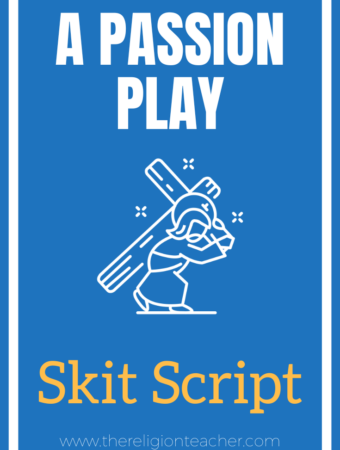In order to expand on a previous post titled “Creating Lesson Objectives,” here is a short introduction to Bloom’s Taxonomy. Many teachers use Bloom’s Taxonomy to select an action verb for lesson objectives. Bloom’s taxonomy categorizes different levels of learning to allow teachers to think about what level they want their students to learn: knowledge, comprehension, application, analysis, synthesis, or evaluation. Dr. Benjamin Bloom and his colleagues created the taxonomy because they found that most teacher test questions require students to think only at the lower levels.
If you are teaching elementary school students, then you are likely to stay within the knowledge/remembering and comprehension/understanding categories. Junior high students begin to be able to apply and analyze while high school students might be able to evaluate/synthesize/create based on the amount of time you spend on teaching a lesson or unit.
Religion and catechesis also call for teachers to help young people learn in the moral and spiritual domain. Bloom’s taxonomy as it is described below refer only to the cognitive domain, meaning this is only helpful in teaching students to know about God not necessarily to know God personally. Keep in mind that the lessons you teach as a religion teacher or catechist will go much deeper than knowledge.
The graph below visually represents the verbs you can choose:

How To Use this Chart: In the middle of the wheel are the different levels of learning (knowledge to evaluation). In the second ring you will find the verbs that you can insert into your lesson plan objectives. In the outer ring you will find activities that relate to the level of learning and action verbs.
For an interactive lesson on how to create lesson objectives using Bloom’s Taxonomy visit the Swineburne University of Techonology’s webpage on Bloom’s Taxonomy.
For updated versions of Bloom’s Taxonomy visit http://www.odu.edu/educ/roverbau/Bloom/blooms_taxonomy.htm or read Marzano et al., The New Taxonomy of Educational Objectives (2007) (or buy it here on amazon)and Marzano, Kendall, Designing & Assessing Educational Objectives (or buy it here
).
Related Posts:
How to Lesson Plan in Religion and Catechesis
Creating Lesson Objectives



I have to say what you have described here in lesson planning is so much more than what I have received in a college classroom. Thank you so much for this valuable resource on lesson planning and objectives.
Thanks Cheranda! I’ll confess that most of what I’ve learned came from the ACE M.Ed. program at the University of Notre Dame.